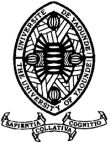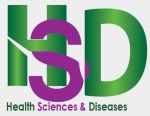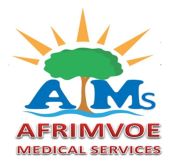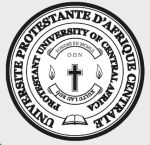Fungal Flora Composition in the Neonatology Department of Souro Sanou University Hospital: A Neglected Infectious Risk for Newborns
Composition de la Flore Fongique dans le Service de Néonatologie du CHU Souro Sanou : Un Risque Infectieux Négligé pour les Nouveau-Nés
DOI:
https://doi.org/10.5281/hra.v3i1.6296Keywords:
: fungal flora, neonatology unit, newborn healthAbstract
ABSTRACT Introduction. Surveillance for healthcare-associated infections is a priority in the neonatal unit given the critical immune status of patients. The aim of this study was to identify the fungal composition of the neonatal ward space and deduce its likely implication on the health of the newborn. Materials and methods. This was a cross-sectional study conducted in september 2017. The laboratory of University Hospital Souro Sanou of Bobo-Dioulasso carried out agar exposures at the Sabouraud and samples of surfaces (walls, benches, doors, incubator interiors) in all the rooms of neonatal unit. The identification of colonies of filamentous fungi was macroscopic and microscopic. Results. Out of 39 samples collected from the environment (air, walls, benches, doorbells), 34 were positive, i.e. an overall prevalence of 97% of fungal contamination of the neonatal service of the University Hospital Souro Sanou of Bobo-Dioulasso. Molds were the most commonly found fungal agents (66.9%), Aspergillus was the most represented genus (26.5%) while Aspergillus fumigatus was the most frequently encountered species (23.5%). Conclusion. The isolation of these fungi such as Aspergillus and other molds is a major public health concern and has important health, economic and social implications. RÉSUMÉ Introduction. La surveillance des infections associées aux soins est une priorité dans l'unité néonatale étant donné l'état immunitaire critique des patients. L'objectif de cette étude était d'identifier la composition fongique de l'espace du service de néonatalogie et d'en déduire son implication probable sur la santé du nouveau-né. Matériels et méthodes. Il s'agit d'une étude transversale réalisée en septembre 2017. Le laboratoire du CHU Souro Sanou de Bobo-Dioulasso a réalisé des expositions sur gélose au Sabouraud et des prélèvements de surfaces (murs, paillasses, portes, intérieurs d'incubateurs) dans toutes les salles de l'unité de néonatalogie. L'identification des colonies de champignons filamenteux a été macroscopique et microscopique. Résultats. Sur 39 échantillons prélevés dans l'environnement (air, murs, paillasses, sonnettes), 34 étaient positifs, soit une prévalence globale de 97% de la contamination fongique du service de néonatalogie du CHU Souro Sanou de Bobo-Dioulasso. Les moisissures étaient les agents fongiques les plus fréquemment retrouvés (66,9%), Aspergillus était le genre le plus représenté (26,5%) tandis qu'Aspergillus fumigatus était l'espèce la plus fréquemment rencontrée (23,5%). Conclusion. L'isolement de ces champignons tels qu'Aspergillus et d'autres moisissures est un problème majeur de santé publique et a d'importantes implications sanitaires, économiques et sociales.References
Rudnicki J, Czajka R, Kucharska E, et al. Nosocomial infections in a neonatology department, 1995-2002. 2003;74(10):1256-61.
Durand S, Rideau Batista Novais A, Mesnage R, et al. Validation of nosocomial infection in neonatology: a new method for standardized surveillance. American journal of infection control. 2014;42(8):861-4.
Jansen SJ, Lopriore E, van der Beek MT, et al. The road to zero nosocomial infections in neonates-a narrative review. Acta paediatrica (Oslo, Norway: 1992). 2021;110(8):2326-35.
Boyce JM. New insights for improving hand hygiene practices. Infection control and hospital epidemiology. 2004;25(3):187-8.
Kramer A, Schwebke I, Kampf G. How long do nosocomial pathogens persist on inanimate surfaces? A systematic review. BMC infectious diseases. 2006;6:130.
Alberti C, Bouakline A, Ribaud P, et al. Relationship between environmental fungal contamination and the incidence of invasive aspergillosis in haematology patients. The Journal of hospital infection. 2001;48(3):198-206.
Faure O, Fricker-Hidalgo H, Lebeau B, et al. Eight-year surveillance of environmental fungal contamination in hospital operating rooms and haematological units. The Journal of hospital infection. 2002;50(2):155-60.
Perdelli F, Cristina ML, Sartini M, et al. Fungal contamination in hospital environments. Infection control and hospital epidemiology. 2006;27(1):44-7.
Bottineau MC, Roze JC, Mouzard A. [Systemic neonatal candidiasis]. Annales de pediatrie. 1988;35(4):235-43.
Romero Reyes MC, Fernández Gutiérrez F, Poyato Domínguez JL, , et al. [Neonatal systemic candidiasis in the nineties]. Anales espanoles de pediatria. 1996;44(3):257-61.
Johnson DE, Thompson TR, Green TP, et al. Systemic candidiasis in very low-birth-weight infants (less than 1,500 grams). Pediatrics. 1984;73(2):138-43.
Stamos JK, Rowley AH. Candidemia in a pediatric population. Clinical infectious diseases: an official publication of the Infectious Diseases Society of America. 1995;20(3):571-5.
Yera H, Sendid B, Francois N, et al. Contribution of serological tests and blood culture to the early diagnosis of systemic candidiasis. European journal of clinical microbiology & infectious diseases: official publication of the European Society of Clinical Microbiology. 2001;20(12):864-70.
Khoory BJ, Vino L, Dall'Agnola A, et al. Candida infections in newborns: a review. Journal of chemotherapy (Florence, Italy). 1999;11(5):367-78.
Zupan V, Gonzalez P, Lacaze-Masmonteil T, et al. Periventricular leukomalacia: risk factors revisited. Developmental medicine and child neurology. 1996;38(12):1061-7.
Pappas PG, Kauffman CA, Andes D, et al. Clinical practice guidelines for the management of candidiasis: 2009 update by the Infectious Diseases Society of America. Clinical infectious diseases: an official publication of the Infectious Diseases Society of America. 2009;48(5):503-35.
Matotou HRS, Sangare I, Bisseye C, et al. [Biodiversity of isolated fungal flora at the reanimation service of the University Hospital Souro Sanou of Bobo-Dioulasso, Burkina Faso]. Pan Afr Med J. 2021;38:299.
Lortholary O, Gangneux JP, Sitbon K, et al. Epidemiological trends in invasive aspergillosis in France: the SAIF network (2005-2007). Clinical microbiology and infection: the official publication of the European Society of Clinical Microbiology and Infectious Diseases. 2011;17(12):1882-9.
Sautour M, Sixt N, Dalle F, et al. Prospective survey of indoor fungal contamination in hospital during a period of building construction. The Journal of hospital infection. 2007;67(4):367-73.
Severo CB, Guazzelli LS, Severo LC. Chapter 7: zygomycosis. Jornal brasileiro de pneumologia : publicacao oficial da Sociedade Brasileira de Pneumologia e Tisilogia. 2010;36(1):134-41.
Seebacher C, Bouchara JP, Mignon B. Updates on the epidemiology of dermatophyte infections. Mycopathologia. 2008;166(5-6):335-52.
Downloads
Published
How to Cite
Issue
Section
License
Copyright (c) 2024 Hadry Roger Sibi Matotou, Solange Nzenze Afene, Barro Makoura, Nakanabo-Diallo Seydou, Charles Viannet Minael Tchibinda Delicat, Millogo Anselme, Yerbanga Isidore, Bamba Sanata

This work is licensed under a Creative Commons Attribution-NonCommercial-NoDerivatives 4.0 International License.
Authors who publish with this journal agree to the following terms:
- Authors retain copyright and grant the journal right of first publication with the work simultaneously licensed under a Creative Commons Attribution License CC BY-NC-ND 4.0 that allows others to share the work with an acknowledgement of the work's authorship and initial publication in this journal.
- Authors are able to enter into separate, additional contractual arrangements for the non-exclusive distribution of the journal's published version of the work (e.g., post it to an institutional repository or publish it in a book), with an acknowledgement of its initial publication in this journal.
- Authors are permitted and encouraged to post their work online (e.g., in institutional repositories or on their website) prior to and during the submission process, as it can lead to productive exchanges, as well as earlier and greater citation of published work










